 |
The ancient Greeks enjoyed them and the Romans used them to make chestnut flour. For centuries, chestnuts were a staple food for country-dwellers in Spain, and today this exceptionally nutritious, natural ingredient is largely associated with haute cuisine. When temperatures drop in autumn, the roast chestnut vendors with their red-hot coals are a welcome sight on city streets. Whether eaten fresh, boiled, roast or candied – they offer variety and flavor, and evoke age-old traditions and family celebrations.
From Russia with warm regards
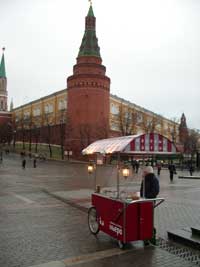 When José Posada decided to enter the Russian market, he knew this was unexplored territory and that he needed to start from scratch. His intuition told him that chestnuts would receive a warm reception in cold Russia so, paying no attention to preconceived ideas, he set out to organize a promotional campaign to make his product known there. In April 2003, the company invited food writers, gastronomes, wine experts, food buyers, etc. to a presentation of their products in the Marriot Aurora Hotel in Moscow. They continued with articles and advertisements in food and wine magazines, they gave out samples in supermarkets, participated in trade fairs, attended gastronomy seminars and offered cooking classes with well-known chefs. They have now registered a new brand, Castañero, to identify their new business line, and have set up roasted chestnut stalls in streets and parks in Moscow , where José Posada, Jr. now spends most of the year. Russia has become the second largest destination for the company’s exports. When José Posada decided to enter the Russian market, he knew this was unexplored territory and that he needed to start from scratch. His intuition told him that chestnuts would receive a warm reception in cold Russia so, paying no attention to preconceived ideas, he set out to organize a promotional campaign to make his product known there. In April 2003, the company invited food writers, gastronomes, wine experts, food buyers, etc. to a presentation of their products in the Marriot Aurora Hotel in Moscow. They continued with articles and advertisements in food and wine magazines, they gave out samples in supermarkets, participated in trade fairs, attended gastronomy seminars and offered cooking classes with well-known chefs. They have now registered a new brand, Castañero, to identify their new business line, and have set up roasted chestnut stalls in streets and parks in Moscow , where José Posada, Jr. now spends most of the year. Russia has become the second largest destination for the company’s exports.
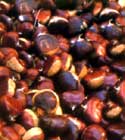 The chestnut tree is a noble, generous tree and one that has an especially long life. It is true that chestnuts do not usually grow spontaneously and that they require careful tending while young, but they are very beneficial for the soil in which they grow and often shelter a varied ecosystem. When grown for timber, the trunk is tall and straight, whereas for fruit, it is shorter with a leafier canopy. The trees take years to bear fruit but, once they reach adulthood, they can last for hundreds or even thousands of years. The chestnut tree is a noble, generous tree and one that has an especially long life. It is true that chestnuts do not usually grow spontaneously and that they require careful tending while young, but they are very beneficial for the soil in which they grow and often shelter a varied ecosystem. When grown for timber, the trunk is tall and straight, whereas for fruit, it is shorter with a leafier canopy. The trees take years to bear fruit but, once they reach adulthood, they can last for hundreds or even thousands of years.
During the summer months, the branches turn a creamy-yellow with the slender male catkins. Then the fruits develop from the female flowers, protected by a capsule that gradually takes the form of a spiky husk. They then drop from the branches during the months of October and November. Harvesting chestnuts is hard work. The fruit is collected from the ground and has to be extracted from any remaining husks. Many parts of Spain retain some sort of celebration linked to the chestnut harvest in autumn.
In the Sierra de Aracena in Huelva in south-west Spain, Janet Murray, founding partner together with Alastair Brown, of the organic produce company Sierra Rica, tells us about the 'apañadoras' - or 'apañaoras', when pronounced with the marked Andalusian accent. “These are women who go out in groups of four to collect chestnuts in the woods to sell them to the cooperatives”. At the other end of Spain, in Galicia, José Posada has a company called Marron Glace. “Everyone here knows us,” he says, referring to the area surrounding the Santo Estevo monastery in Ourense, one of Spain's main chestnut-producing areas, “and they bring their harvests directly to the factory”.
Galician Chestnuts 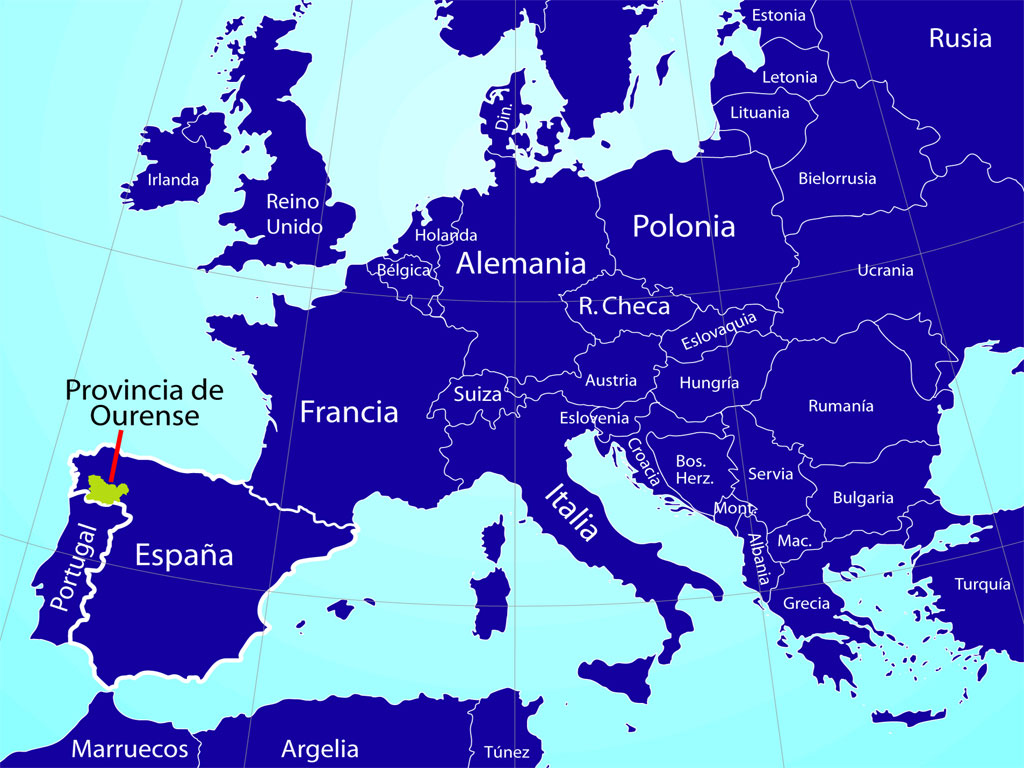 'Castanea sativa' is the name of the European variety which is said to have originated in Asia. It is also known as the common chestnut and is different from the Chinese, Japanese or American chestnut. In Spain, one of the most popular varieties is the Galician chestnut because of its flavor, its non-floury texture and its “peelability”. Galician chestnut producers have decided to create a quality seal for their product, guaranteeing its properties and the processing methods used, thus promoting it as a crop. The application for the PGI (Protected Geographical Indication) has already been accepted by the Spanish Ministry for Agriculture, Fisheries and Food. So the PGI Castañas de Galicia will probably be available starting in 2007. 'Castanea sativa' is the name of the European variety which is said to have originated in Asia. It is also known as the common chestnut and is different from the Chinese, Japanese or American chestnut. In Spain, one of the most popular varieties is the Galician chestnut because of its flavor, its non-floury texture and its “peelability”. Galician chestnut producers have decided to create a quality seal for their product, guaranteeing its properties and the processing methods used, thus promoting it as a crop. The application for the PGI (Protected Geographical Indication) has already been accepted by the Spanish Ministry for Agriculture, Fisheries and Food. So the PGI Castañas de Galicia will probably be available starting in 2007.
 Galicia has 81 varieties of native chestnuts, most of which go straight to the market as fresh produce or are used to make creams and flour. The fruits of the Galician chestnut are usually a shiny light brown, the membrane that separates the fruit from the husk is fairly thin and easy to remove, the texture is not floury and the flavor is sweet. Also, generally speaking, there are no more than three fruits per husk. The chestnut is a perishable product with characteristics that may vary over a short period of time so it is important that the fruit is collected within 48 hours after falling from the tree and that it is transported to the storage area no later than two days after collection. This is the reason why PGI will guarantee that not only have the products been obtained within the region but also that they have been processed and packed in Galicia. In addition to fresh chestnuts, the Protected Geographical Indication will include frozen, dried and bottled chestnuts and chestnut flour. Galicia has 81 varieties of native chestnuts, most of which go straight to the market as fresh produce or are used to make creams and flour. The fruits of the Galician chestnut are usually a shiny light brown, the membrane that separates the fruit from the husk is fairly thin and easy to remove, the texture is not floury and the flavor is sweet. Also, generally speaking, there are no more than three fruits per husk. The chestnut is a perishable product with characteristics that may vary over a short period of time so it is important that the fruit is collected within 48 hours after falling from the tree and that it is transported to the storage area no later than two days after collection. This is the reason why PGI will guarantee that not only have the products been obtained within the region but also that they have been processed and packed in Galicia. In addition to fresh chestnuts, the Protected Geographical Indication will include frozen, dried and bottled chestnuts and chestnut flour.
A natural food The chestnut is a very nutritious fruit, mostly comprised of water and carbohydrates. Its low calorie content makes it more akin to a grain than a nut although it falls within the nut category. It also contains vitamin C and minerals, but the amount of these depends on the soil in which the tree grows. From the Middle Ages and well into the 20th century, they were often a staple food for whole communities of peasants in Europe. However, during the late 19th and early 20th centuries, the chestnut growing area in Spain, as well as in other countries, decreased drastically.
José Posada Enríquez, the son of José Posada, gives several reasons for this. “First, tree diseases such as blight and root rot; second, replacement of the chestnut for easy-to-grow produce such as potatoes which, since their introduction from America in the 16th century, had become hugely popular; third, the planting of fast-growing trees such as the eucalyptus, originally from Australia; fourth, forest fires; and fifth, the shrinking population in rural areas”.
Efforts are being made in Spain today to promote chestnut cultivation, with many projects including activities to promote the health-giving properties of the chestnut. “The projects are largely successful because of the popularity today of traditional products that offer added-value”, says José Posada, Jr. “The main growing areas today are Galicia, the Bierzo district in León, the Sierra de Aracena in Huelva, the Ronda Mountains in Málaga, some parts of La Rioja and Asturias”.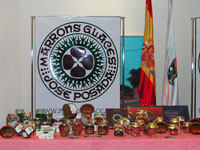
Inevitably, the chestnut is linked to the idea of an organic product. A company such as Sierra Rica, whose business model is based on this concept, would not sell chestnut-based products if this were not the case. “In order to obtain organic certification for our products, such as the seal of the US National Organic Program, we have to guarantee that all our suppliers sell us raw materials containing no additives,” explains Janet. “We only use cane sugar in processing”. This company exports 99% of its total production, mainly to the United Kingdom and the US, but also to Japan, Holland, Germany and Switzerland.
A delicate production process
Chestnuts can be used to make sweet creams, purées, soups, cakes and, the star of them all, marrons glacés. These require tremendous care throughout the process. Transformation of the original fruit into this world-renowned glazed candy begins with the selection of the biggest and best fruits at harvest stage. José Posada, Sr. describes the different steps as he guides us around his plant. “First we soak the chestnuts in water to reduce the tannin content”. The fruits are then dried. “We put them into a sort of swimming pool that we erect and stir them to let the air in before we begin to peel them. We then steam the chestnuts to soften the skins, and transfer them to machines that rub them with finger-like movements to peel them. Only about half the skin is removed mechanically - the rest has to be done manually because it is essential that no skin is left on the fruit”.
 After peeling and classification, the chestnuts are placed in crates with separations to protect them and are cooked in soft water Ander controlled temperature and pressure conditions. They then move on to the sweetening baskets. This is when the chestnut becomes impregnated with syrup, usually flavored with aromas such as vanilla. At the end of this process, the product is left to rest for three or four days before glazing. Marron Glace produces 800 metric tons of chestnuts a year and just over half, 55%, goes abroad directly. After peeling and classification, the chestnuts are placed in crates with separations to protect them and are cooked in soft water Ander controlled temperature and pressure conditions. They then move on to the sweetening baskets. This is when the chestnut becomes impregnated with syrup, usually flavored with aromas such as vanilla. At the end of this process, the product is left to rest for three or four days before glazing. Marron Glace produces 800 metric tons of chestnuts a year and just over half, 55%, goes abroad directly.
A universal cooking ingredient “Right now, Japan is one of the largest consumers of marrons glacés, almost at the same level as France”, says José Posada. France still has a high level of consumption and is the destination of about 40% of Spanish exports but, alongside this classic market, new customers are appearing. “Chestnuts are highly valued in Japan” he explains. “Together with China, it is the world's largest importer”.
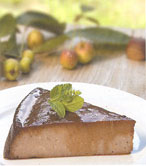 Chestnuts can be consumed in a huge variety of ways. They tend to be associated with the cold seasons of autumn and winter, especially in European cities where chestnut sellers are a popular attraction in cold weather. In the US, although native chestnuts were practically wiped out by blight, they are a regular feature of Thanksgiving celebrations. The British also appreciate chestnuts in stuffings, soups and desserts. At London's Moro restaurant one of the most popular dishes on the menu is a soup made of chorizo (a type of red sausage) and chestnuts. “But chestnuts are used in a few other dishes”, they admit. Their supplier is Sierra Rica. Chestnuts can be consumed in a huge variety of ways. They tend to be associated with the cold seasons of autumn and winter, especially in European cities where chestnut sellers are a popular attraction in cold weather. In the US, although native chestnuts were practically wiped out by blight, they are a regular feature of Thanksgiving celebrations. The British also appreciate chestnuts in stuffings, soups and desserts. At London's Moro restaurant one of the most popular dishes on the menu is a soup made of chorizo (a type of red sausage) and chestnuts. “But chestnuts are used in a few other dishes”, they admit. Their supplier is Sierra Rica.
Spanish chefs also appreciate chestnuts and include them in their recipes. “The chestnut has a high starch and sugar content, and used to be an essential food in growing regions in Spain”, says Paco Torreblanca, head pastry maker at the Totel establishment in Alicante. Other cooks, such as Toñi Vicente in Galicia and Toño Pérez in Extremadura (see Recipes) at his Atrio restaurant in Cáceres, also include them in their menus every year. It is easy to understand, in spite of the bad times the chestnut tree has been through, why chestnuts still have a place in the cuisine of countries the world over.
Isabel Escauriaza is a journalist who collaborates with the editorial team of Spain Gourmetour.
Journal "SPAIN GOURMET TOUR"-ICEX-October-December 2006
(with the approval of ICEX-Spanish Institute for Foreign Trade). http://www.spaingourmetour.com
|
 |

